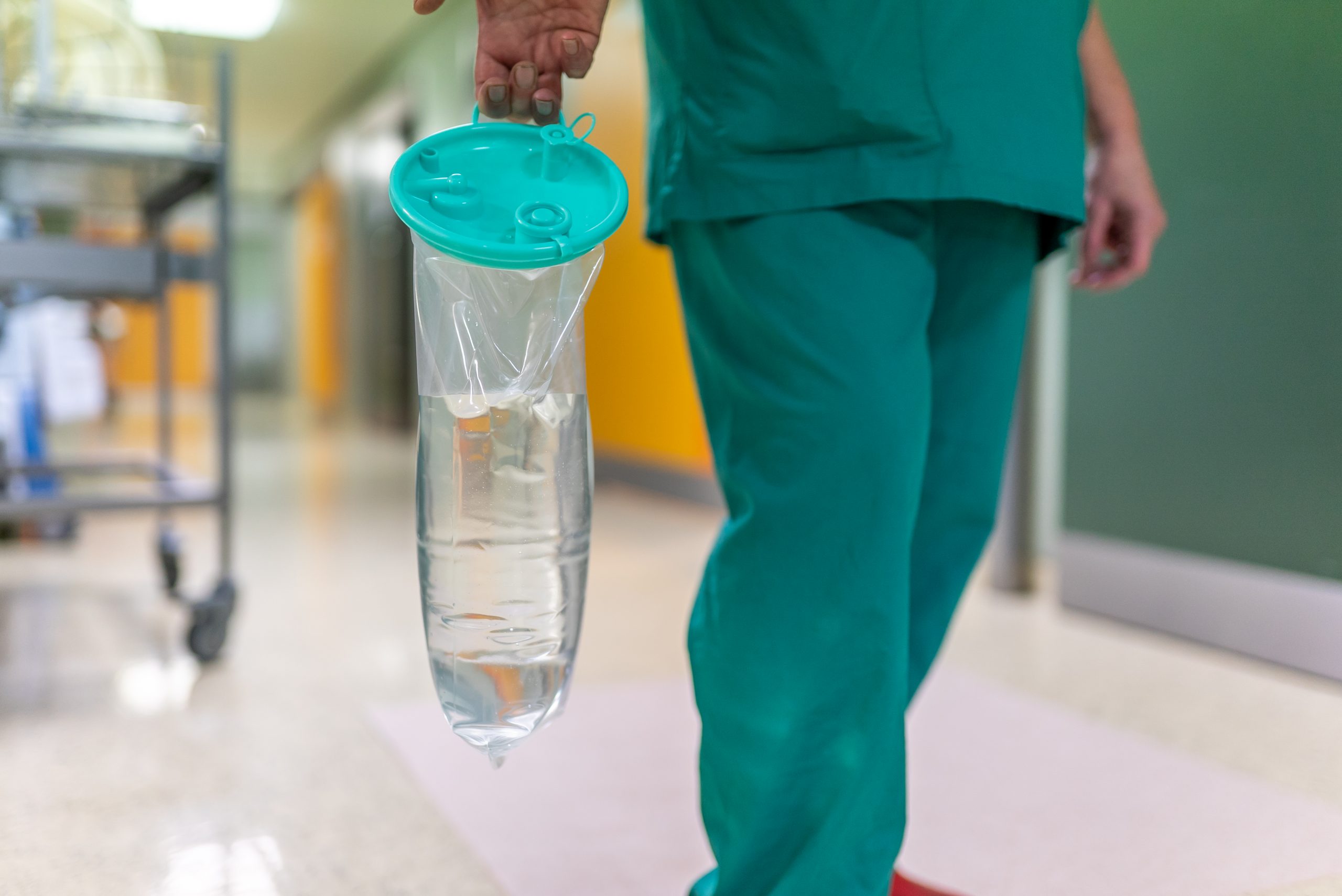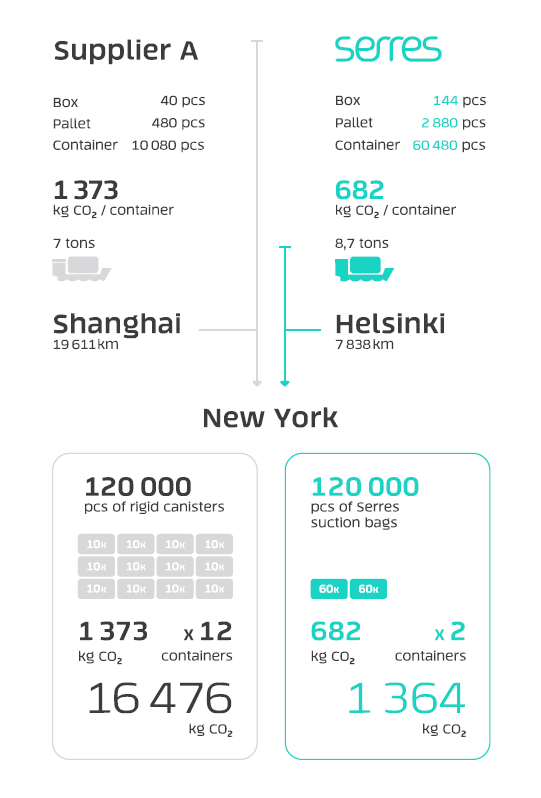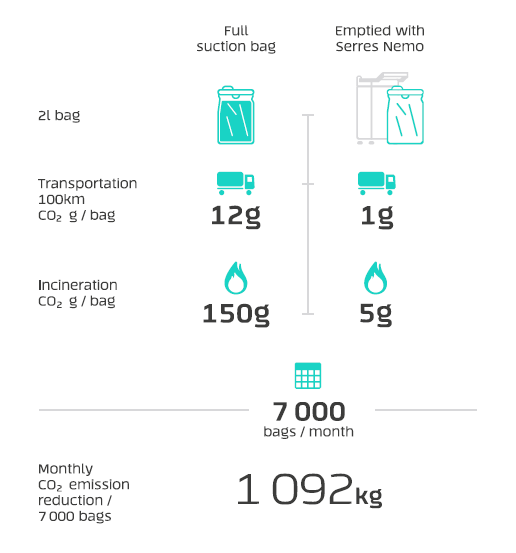Supporting over 40,000 surgeries a day, Serres integrated solutions have a focus on safety, sustainability, and savings. So from the time of initial waste collection to final disposal, no party involved needs to worry.
Discover how the Serres Integrated System Works
By utilizing suction bags as canister liner that captures waste, rather than dispensing fluid directly into the canister, your process instantly becomes safer and more convenient than ever before. To make this process even more efficient, these suction bags and canisters can be secured onto a portable trolley, which can hold up to twelve cannisters at once. Once your procedure is complete, simply lift the bags from the canisters for disposal.
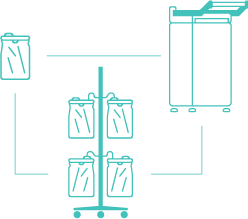
The sealed suction bags can then be placed inside the Serres Nemo, an unparalleled solution for fluid waste disposal. Not only does the Serres Nemo accelerate the fluid disposal process with its short 20-second emptying cycle, it also completely removes the need for staff to open contaminated canisters and bags. The Nemo achieves up to 90% cost savings compared to a high volume system. Once this process is complete, the bag is emptied of all contents and can be safely discarded.
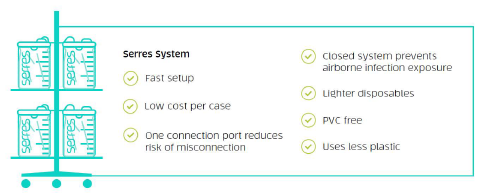
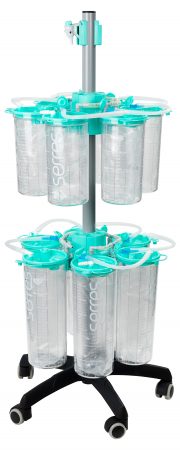
The Serres trolley is easy to maneuver and is capable of fitting multiple cannisters at once.
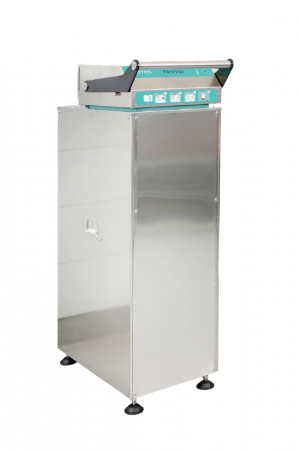
The Serres Nemo provides a safer, faster, and more cost-effective method of fluid waste disposal.
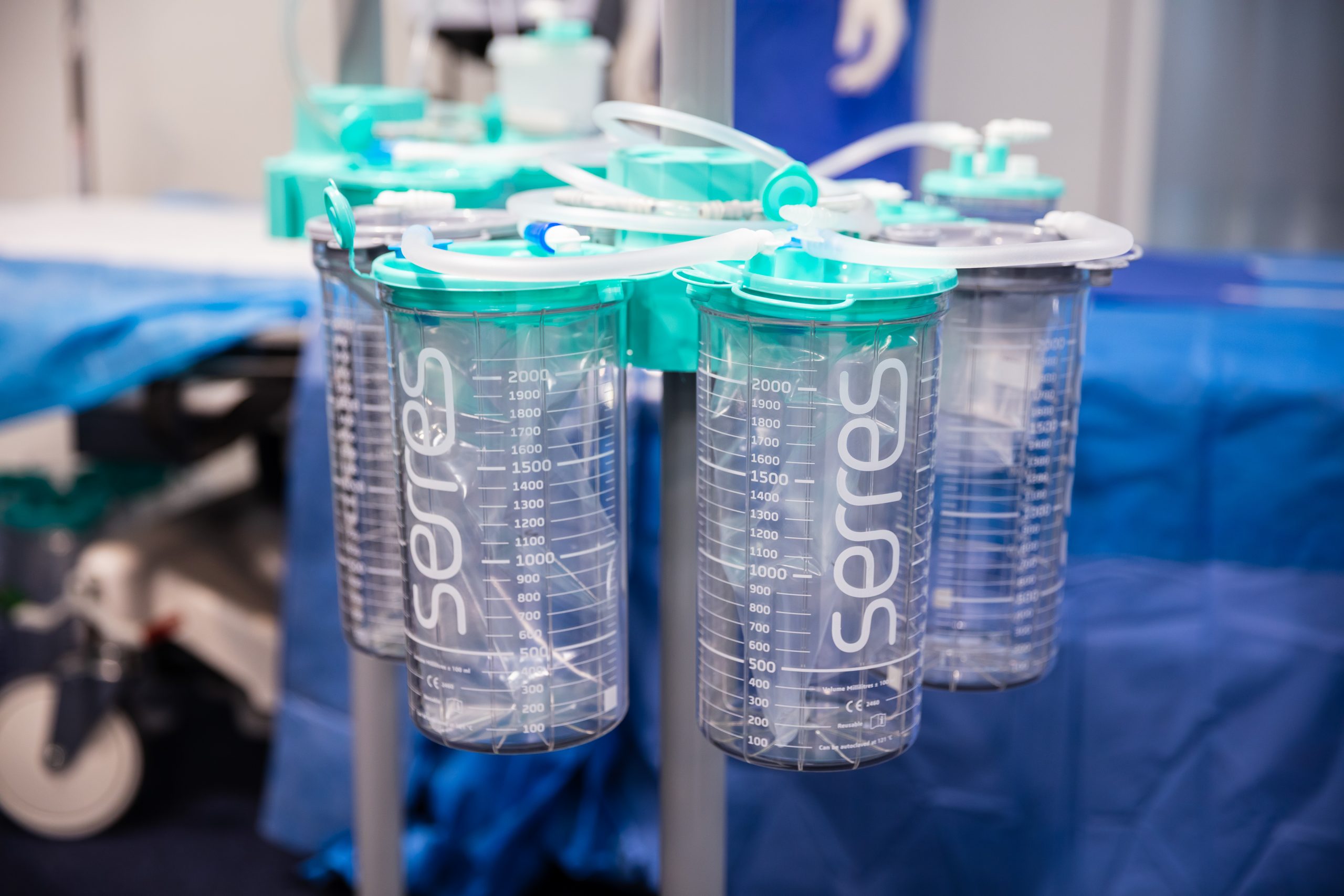
Fluid waste is completely contained within suction bags, simultaneously eliminating the need to dispose of your canisters post-surgery, while also decreasing the risk of spills and mess.


